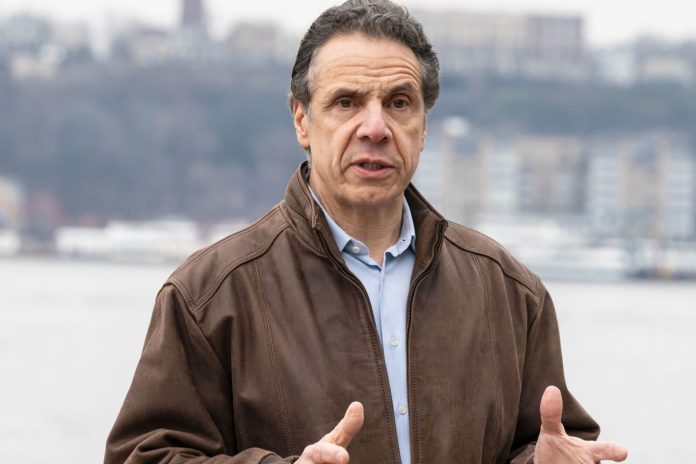It’s remarkable that as bad as the fast-deteriorating coronavirus situation in New York’s jails and prisons is, it could have been much worse. Governor Cuomo and Mayor de Blasio have each been dangerously slow to let people go free, leaving thousands of vulnerable prisoners to weather the pandemic’s ravages, particularly on Rikers Island, where the rate of infection is seven times that of the city surrounding it. Fortunately, though, they came up short at a time when their capacity to do harm has been reduced. De Blasio boasted last week that the Rikers population was at its lowest levels since 1949. Much of the dropoff is attributable to recent bail-reform measures enacted at the state level. Since January, when the legislation took effect, cash bail has been eliminated in New York for most misdemeanors and nonviolent felonies. The result is that there are thousands fewer people imperiled by the outbreak at Rikers today than there would have been under the previous status quo. “Each day in February of this year, almost 7,000 fewer New Yorkers were jailed pretrial than in February 2019,” said Erin Leigh George, the Civil Rights Campaigns director for Citizen Action of New York, an advocacy organization.
Nevertheless, both the governor and mayor seem hell-bent on pressing their luck. As the bail-reform law has helped them avoid an even bigger catastrophe than the one already brewing at Rikers, Cuomo and de Blasio have remained among its most vocal opponents — despite the governor’s stamp of approval in signing it last year. Both men have argued that the law goes too far and frees too many people; now their attitudes have infected the state budget, on which lawmakers reached an agreement this week. Cuomo committed previously to not signing a budget without substantial changes to bail reform, which he’s misleadingly cast as mere “fine-tuning,” and he finally got his way in a Friday vote. Key alterations to the law include a dramatic expansion of detention and bail-eligible offenses. Among dozens of new provisions: A person who has been released of their own recognizance for a misdemeanor who isn’t bail-eligible can now be detained and subject to bail if they commit another misdemeanor after they’ve been freed.
The myriad changes weren’t quite as severe as what advocates had been bracing for. In drafts of the legislation that seemed close to passage as recently as yesterday, bail would have been eliminated altogether and the question of whom to detain pretrial left up to judges. Judges, in turn, would have decided whom to remand — or keep locked up indefinitely with no due-process protections or avenues for release — based on whether they personally believed that the accused person posed a flight risk or danger to their community. Yet even in their absence, the spirit of these proposed changes are alive and well in the final budget. New York officials have responded to an unfolding disaster wrought by imprisoning too many people by broadening their discretion to imprison more people.
Cuomo had already taken heat for other features of the budget that don’t pertain to incarceration directly. Perhaps the most incongruous is $400 million in funding cuts to hospitals. (Cuomo insisted that federal funding will mitigate some of the shortfall, according to the New York Times.) With eight months until the new budget would take effect, lawmakers in Albany seem to be counting on having weathered the worst of COVID-19, which bakes in a readymade face-saving measure; condemning greater numbers of people to filthy jails while reducing health-care capacity and infrastructure might not look as bad without the specter of an active pandemic hovering over them. It’s the same political cynicism that’s caused the governor and mayor to slow-walk their pandemic responses so far — spurring a public-health crisis at Rikers even as Cuomo has been praised widely for managing the pandemic better than President Trump. The New York City Board of Correction, criminal-legal reform advocates, and medical experts alike have been saying for weeks that the best way to protect prisoners, corrections officers, and medical staff at places like Rikers is to let as many prisoners walk free as possible, as quickly as possible. Instead, officials have done so piecemeal and with great prejudice; their largesse has been limited to people detained for some, but not all, noncriminal parole violations and misdemeanor offenses. More often, long-standing concerns about appearing “soft on crime” have been an effective counterweight to common sense. When you have public-health advocates in one ear and district attorneys in the other screaming “law and order,” the choice for a politician is often treated as no choice at all, and New York is no exception.
As such, the same missteps that incubated today’s crisis are being recycled to facilitate future havoc. Despite hundreds of prisoners’ being set free in trickles of amnesty in recent days, more than 4,500 are still stuck at Rikers. The conditions to which they’re being subjected turn the stomach. Accounts abound of inadequate access to cleaning supplies and a near-total absence of social-distancing measures in several dormitories. Medical capabilities are being overwhelmed, with some prisoners forced to play medic for others until real doctors arrive. Guards are openly begging their incarcerated wards to behave so as not to exacerbate an already-tense situation. With no plans for freeing prisoners en masse, the governor and mayor are condemning the island’s residents and workers to weeks and potentially months of panic and expanding infection. And despite it all, this morning in Albany, Cuomo ensured that the relatively low Rikers population will swell again soon. “These [bail-reform] laws have been critical public-health protections in the face of coronavirus,” said George. “Yet still, elected leadership, driven by politics rather than advancing sound policy and human rights, will undo them.”







